Alaska Fish & Wildlife News
March 2024
Better Culverts are Fish Friendly
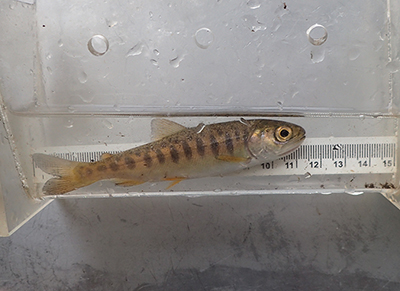
On a sunny September day, myself and two technicians, Beth and Kat, were surveying culverts in the Mat-Su Borough and assessing their ability to effectively allow fish to pass through them. Culverts, for the unfamiliar, are those pipes – often made of corrugated or grooved metal – that funnel streams under roads, railroad tracks, and trails.
That day we were assessing a series of culverts along Cottonwood Slough, a tributary to Cottonwood Creek, where the once wild stream had been constrained into nothing more than a roadside ditch. To most passersby, the thought of juvenile salmon inhabiting the ditch might have been laughable. I could even sense Beth and Kat both quietly questioning my desire to deploy minnow traps here, not to mention why we were using up this precious sunny day to assess these small culverts along a roadside ditch. Later in the day when we pulled the traps, we were surprised to find the traps full of dozens of juvenile coho salmon and rainbow trout. Looking at the abundance of fish in this location was really a light bulb moment for why we were there.
You have probably walked or driven over thousands of culverts in your life but have never given too much thought about how a culvert impacts the natural plumbing of the stream or the fish and aquatic organisms in those streams. You’re not alone. Up until 25 years ago, most culverts installed in Alaska and the rest of the country were installed with the sole purpose of moving water quickly and efficiently underneath the roadways to prevent flooding and provide pathways for stormwater. Little thought went into how these pipes might affect the aquatic organisms living in those streams.
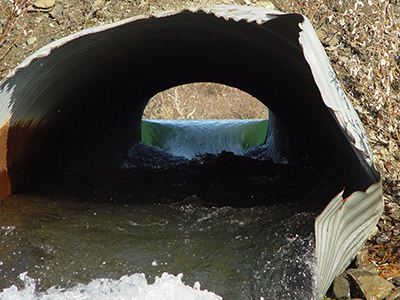
Culverts can take a variety of forms, but if not properly designed, installed, or maintained, can have significant negative impacts on aquatic resource passage. Culverts can create barriers to fish migration, particularly for species that rely on seasonal movements to spawn, feed, or seek suitable habitat. If a culvert is too steep, too narrow, or lacks appropriate water flow, fish may be unable to pass through, limiting their access to critical habitats. To mitigate these impacts, it is essential to incorporate fish-friendly design features such as low gradients, adequate water depth and velocity, and natural substrate into culvert construction and maintenance practices. Additionally, regular monitoring and maintenance of culverts is necessary to ensure they remain functional and do not impede the movement of aquatic organisms.
Culverts that are undersized, improperly placed, or designed with smooth featureless surfaces can impede or totally block fish and aquatic species from passing. Culverts with extremely high velocity flows make it incredibly difficult for aquatic organisms to navigate upstream, and extremely low velocity flows make it hard for fish to pass in either direction. Smooth-walled culverts can also increase the water velocity in the pipe and do not provide any resting areas for fish during their journey through the culvert. The high-velocity flows can erode the stream channel immediately downstream of the culvert, which can leave the culvert pipe perched. This height above the water channel makes it impossible for organisms to pass through. Debris can also collect in the culvert, not only blocking fish passage, but water as well.
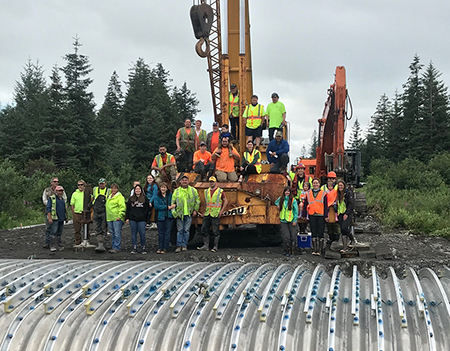
For nearly 25 years, the Alaska Department of Fish and Game (ADF&G) has recognized this issue and in 1999, ADF&G created the Fish Passage Improvement Program to begin assessing culverts around state roads. Today, the Fish Passage Program, which is part of Sport Fish, continues to assess culverts but also provides technical expertise and other assistance to fish passage projects around the state. The information is used by restoration groups planning replacement projects, by road managers planning road upgrades and for watershed assessments and other decision-making tools. All the assessment data is available in an interactive map.
The Power of Partners
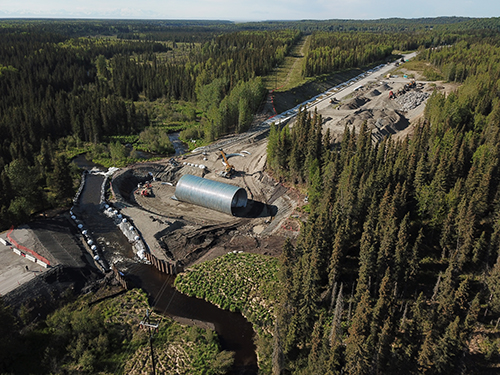
With thousands of culverts affecting the free movement of fish, how does an agency with no road authority address this resource management issue? The answer is through building strong relationships with dedicated partners. Like all major problems in the world, Alaska’s fish passage issue cannot be solved by a single individual or agency. One of the hallmarks of Alaska's fish passage efforts is the collaborative approach involving various stakeholders. Local communities, government agencies, tribal organizations, and conservation organizations have joined forces to implement fish passage projects across the state. This bottom-up approach not only fosters a sense of stewardship among residents but also ensures that initiatives are tailored to the specific needs of each watershed, maximizing their effectiveness. It takes many dedicated and hardworking people and organizations working together for a common purpose. From the planning stage to construction, these projects often take years to complete and can cost hundreds of thousands or even millions of dollars to complete.
Alaska's fish passage projects have exemplified the power of partnerships in achieving conservation goals in one of the world's last wild frontiers. Currently, the Bipartisan Infrastructure Law and Inflation Reduction Act has ear marked billions of dollars specific for addressing fish passage to be awarded out over the next five years. Last year, the first year of funding, the state of Alaska was successfully able to bring in over $50 million dollars for fish passage improvement projects and programs, one of the highest amounts for any state in the country.
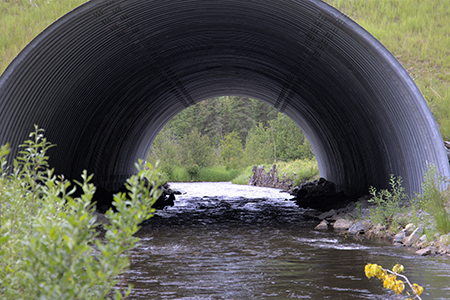
In a time when Pacific salmon populations continue to face unprecedented challenges and uncertainties, Alaska is forging a path towards a more sustainable coexistence between human activities and the natural environment. Through shared commitment and collaboration, these power partnerships are not only enhancing fish passage but also helping safeguarding Alaska's rich biodiversity for future generations.
For additional information or to see more examples of fish passage restoration projects. Please visit our website or if you would like to meet with staff to discuss your project, or email Division of Sport Fish RTS Habitat Biologist Michael Mazzacavallo at michael.mazzacavallo@alaska.gov
Subscribe to be notified about new issues
Receive a monthly notice about new issues and articles.
